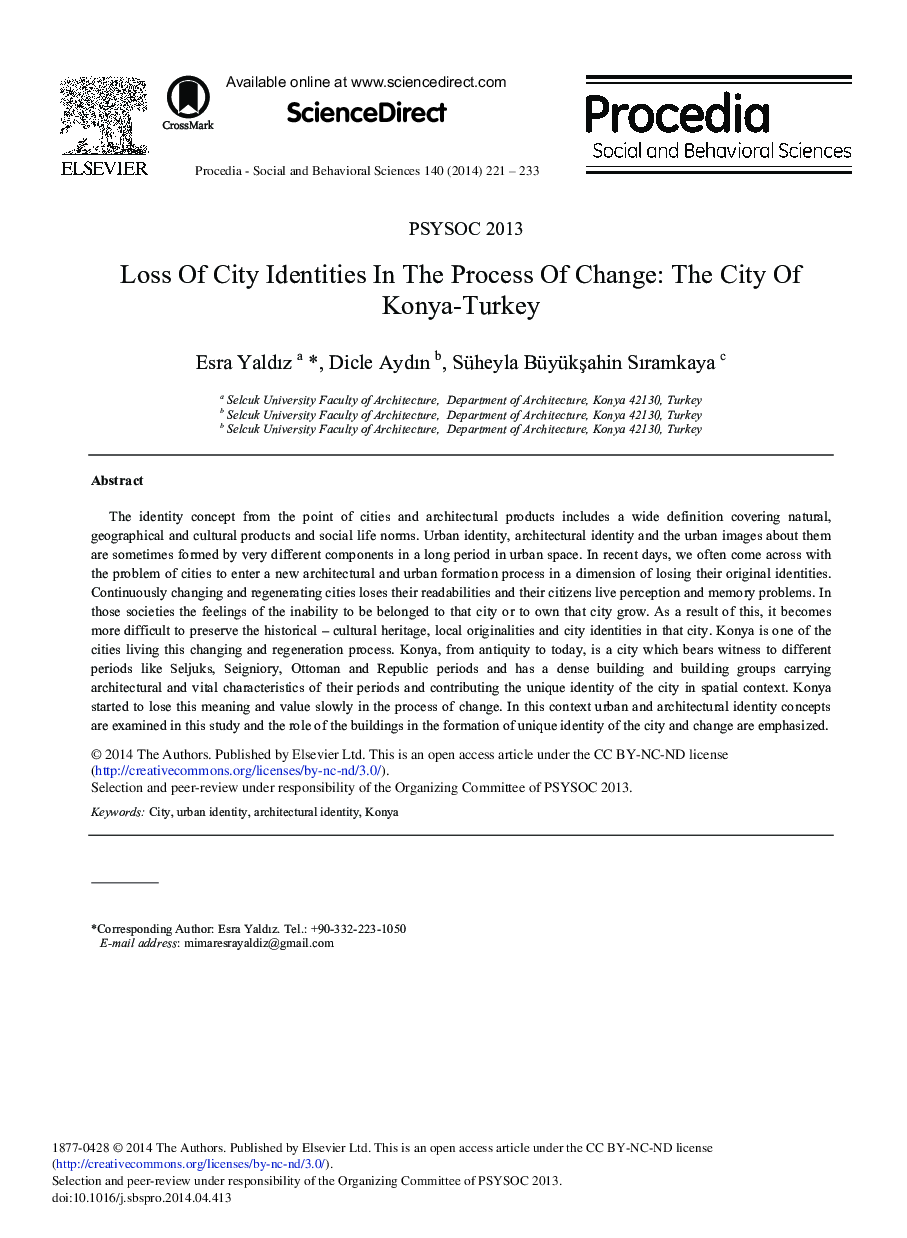| Article ID | Journal | Published Year | Pages | File Type |
|---|---|---|---|---|
| 1112920 | Procedia - Social and Behavioral Sciences | 2014 | 13 Pages |
The identity concept from the point of cities and architectural products includes a wide definition covering natural, geographical and cultural products and social life norms. Urban identity, architectural identity and the urban images about them are sometimes formed by very different components in a long period in urban space. In recent days, we often come across with the problem of cities to enter a new architectural and urban formation process in a dimension of losing their original identities. Continuously changing and regenerating cities loses their readabilities and their citizens live perception and memory problems. In those societies the feelings of the inability to be belonged to that city or to own that city grow. As a result of this, it becomes more difficult to preserve the historical – cultural heritage, local originalities and city identities in that city. Konya is one of the cities living this changing and regeneration process. Konya, from antiquity to today, is a city which bears witness to different periods like Seljuks, Seigniory, Ottoman and Republic periods and has a dense building and building groups carrying architectural and vital characteristics of their periods and contributing the unique identity of the city in spatial context. Konya started to lose this meaning and value slowly in the process of change. In this context urban and architectural identity concepts are examined in this study and the role of the buildings in the formation of unique identity of the city and change are emphasized.
